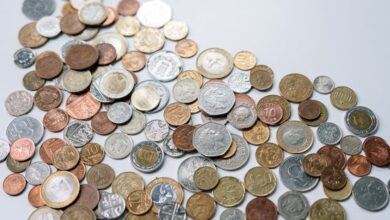Metals in Motion: Understanding the Dynamics of Industrial Demand and Investment Opportunities

In today's rapidly evolving global economy, the dynamics of metal markets are more critical than ever, influencing both industrial development and investment strategies. Precious and industrial metals like silver, copper, and rare earth elements play pivotal roles not only in traditional manufacturing but also in emerging technologies aimed at fostering sustainability. This article delves into the multifaceted nature of these metals, exploring how silver balances its dual identity as both an industrial necessity and a sought-after investment. We will examine copper's function as a barometer for economic health, the surging demand for rare earth metals driven by green energy technologies, and the competitive landscape of platinum versus palladium as investment choices. Additionally, we will discuss how metals contribute to portfolio diversification, the impact of inflation on their prices, the future of aluminum in a sustainable economy, and how mining regulations shape market trends. Together, these insights will provide a comprehensive overview of the vital role metals play in our economy and their implications for investors and industries alike.
- 1. "Silver's Dual Identity: Industrial Demand vs. Investment Appeal"
- 2. "Copper Insights: A Barometer for Global Economic Trends"
- 3. "Navigating the Rare Earth Market: Green Energy's Influence on Demand"
1. "Silver's Dual Identity: Industrial Demand vs. Investment Appeal"
Silver's dual identity as both an industrial commodity and an investment asset creates a unique dynamic in its markets. On one hand, silver is widely recognized for its essential role in various industrial applications, including electronics, photovoltaics, and medical devices. Its excellent electrical conductivity, thermal resistance, and antibacterial properties make it indispensable in manufacturing processes. The rise of green technologies, such as solar panels, has further intensified silver's industrial demand, as silver paste is a critical component in photovoltaic cells. As industries seek to innovate and reduce their carbon footprints, the demand for silver in industrial applications is expected to remain strong.
On the other hand, silver is also viewed as a safe-haven investment, akin to gold. Investors often turn to silver during periods of economic uncertainty or inflation, as it has historically served as a store of value. Silver's relatively lower price compared to gold makes it an attractive option for those looking to diversify their portfolios without committing significant capital. Additionally, silver's liquidity and accessibility enhance its appeal as an investment vehicle.
The interplay between these two identities creates volatility in silver prices, as shifts in industrial demand can significantly impact investment sentiment. For instance, during economic downturns, a slowdown in industrial activity can lead to decreased demand for silver, prompting investors to reassess their positions. Conversely, in times of economic growth or rising inflation, both industrial and investment demand can surge, driving prices higher.
Ultimately, understanding silver's dual role is crucial for investors and market analysts alike. As the global economy evolves, the balance between industrial demand and investment appeal will continue to shape the future of silver in both markets.
2. "Copper Insights: A Barometer for Global Economic Trends"
Copper is often termed "Dr. Copper" within financial circles, reflecting its reputation as a reliable indicator of global economic health. This is primarily due to copper's extensive use in various industries, including construction, electronics, and manufacturing. As economies expand, the demand for copper typically increases, driven by infrastructure projects, consumer goods production, and technological advancements. Conversely, when economic activity slows, demand for copper tends to decline, leading to price reductions.
The correlation between copper prices and economic performance can be observed through historical trends. For instance, during periods of robust economic growth, such as the post-2008 recovery, copper prices surged, propelled by increased demand from emerging markets, particularly China. This trend underscores how fluctuations in copper prices can signal shifts in industrial activity and economic confidence.
Moreover, the copper market is influenced by various factors, including supply chain dynamics, geopolitical tensions, and technological innovations. Disruptions in mining operations, regulatory changes, or trade policies can significantly impact supply levels, thereby affecting prices. For example, labor strikes in major copper-producing countries or environmental regulations can lead to reduced output, pushing prices higher even amid weakening demand.
Investors and analysts closely monitor copper price movements as part of their broader economic assessments. A rising copper price may indicate anticipated growth or recovery in industrial sectors, prompting investment in related equities or commodities. Conversely, falling prices may signal potential economic downturns, leading investors to reassess their positions and seek safer assets.
In summary, copper serves not only as a critical industrial metal but also as a barometer for global economic trends. Its price movements offer valuable insights into the health of economies, making it an essential component of market analysis for investors and policymakers alike.
3. "Navigating the Rare Earth Market: Green Energy's Influence on Demand"
The transition towards green energy technologies is significantly reshaping the demand for rare earth metals, which are vital for the production of high-performance magnets, batteries, and other essential components in renewable energy systems. As nations around the world commit to reducing carbon emissions and investing in sustainable energy sources, the need for rare earth elements (REEs) such as neodymium, dysprosium, and lithium is surging.
Wind turbines, electric vehicles (EVs), and energy-efficient technologies rely heavily on these metals. For instance, neodymium-iron-boron magnets are crucial for the efficiency of wind turbines and electric motors, while lithium is a key component in lithium-ion batteries that power EVs. The growing adoption of these technologies is driving up the demand for rare earth metals, creating a competitive market landscape.
However, this increasing demand also highlights the challenges in the rare earth supply chain. Most of the world's rare earth production is concentrated in a few countries, with China being the dominant player. This concentration can lead to supply vulnerabilities, particularly as geopolitical tensions rise. As countries strive for energy independence, there is a push to develop alternative sources of rare earths through recycling and domestic mining initiatives.
Investors in the rare earth market must navigate these complexities, balancing the exciting growth potential driven by green energy with the risks associated with supply chain dependencies and regulatory environments. The long-term outlook suggests that as green technologies continue to evolve and expand, the demand for rare earth metals will remain robust, positioning them as critical assets in the transition towards a sustainable economy.
In conclusion, the intricate interplay between metals and the broader economic landscape highlights their significance not only as commodities but also as essential components of modern technology and investment strategies. Silver's dual identity as both an industrial resource and a store of value underscores its importance in a market increasingly driven by technological advancements and investment diversification. Similarly, copper remains a reliable indicator of global economic health, reflecting trends that resonate across various sectors.
The burgeoning demand for rare earth metals, propelled by green energy technologies, exemplifies how sustainability initiatives are reshaping the market dynamics. As investors weigh options between platinum and palladium, understanding their unique properties and market behaviors becomes crucial for making informed investment decisions. Additionally, the role of metals in diversifying investment portfolios is becoming more pronounced, especially in the context of inflation, which consistently impacts the prices of both precious and industrial metals.
Looking ahead, the future of aluminum appears promising as industries pivot toward sustainable practices, while mining regulations will continue to influence metal prices, adding another layer of complexity to the investment landscape. As we navigate these evolving markets, staying informed about the factors that drive demand and pricing will be essential for both investors and industry stakeholders alike. The multifaceted role of metals will undoubtedly shape our economies and investment strategies for years to come.





